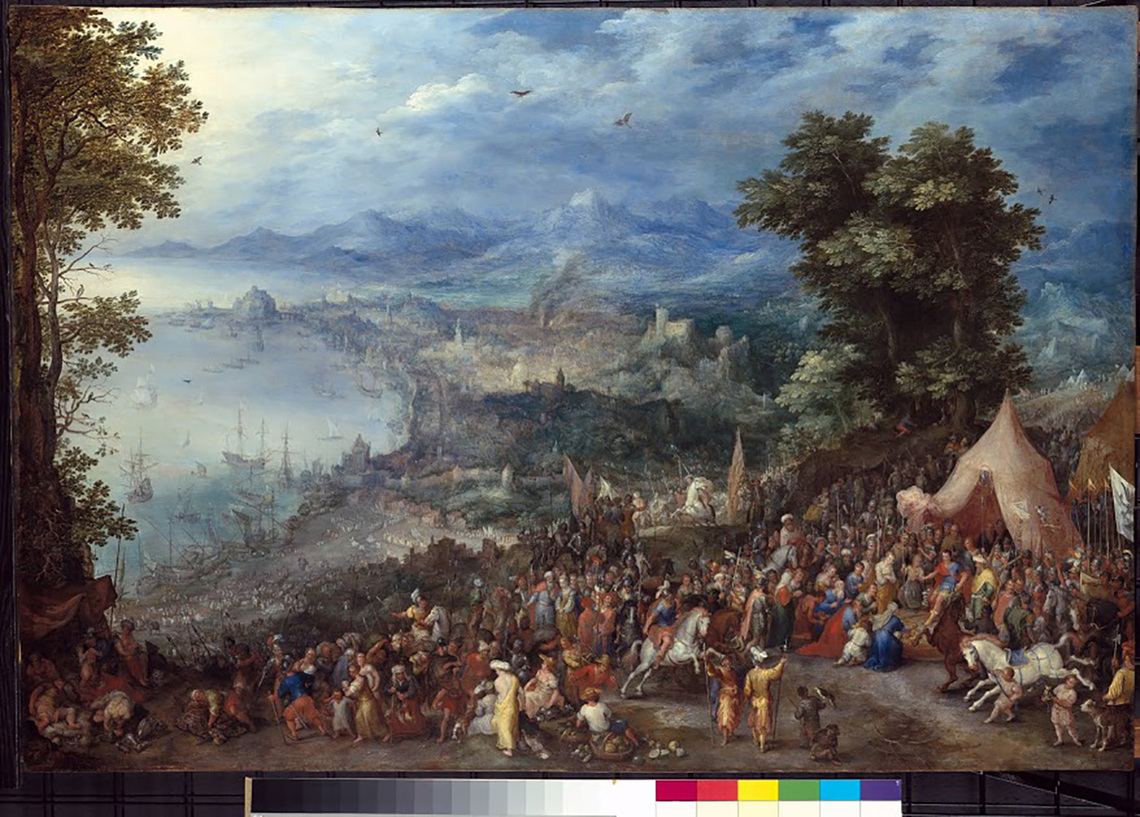The Continence of Scipio
| Object type | Painting |
| Genre | Classical History |
| Date | ca. 1600 |
| Dimensions | 72.5 x 106.5 cm |
| Support | Copper |
| Medium | Oil |
| Signature | BRUEGHEL 160(0?) FEC ANVERSA |
| Our attribution | Jan Brueghel the Elder |
| Other authorities | Ertz 2008-10, #547 Ertz 1979, #61 |
| Location | Munich, Germany |
| Collection | Alte Pinakothek |
| Accession numbers | inv. #827 |
| Tags | Horse, World, Crowd, Classical, History, Landscape |









The most likely candidate for the Scipio’s original owner would be some Palatinate prince. Jan’s connections to the Palatinate are hard to pin down but they certainly existed. His Scipio left its trace in the Frankenthal area in the form of Pieter Schoubroeck’s Continence of Scipio of c.1603: copper, 66 x 115 (Speyer, Historisches Museum der Pfalz, inv. #HM 36), a work which strongly suggests that the artist had seen Jan’s version of the subject.
The landscape here clearly attempts to envision the setting of New Carthage as described by Livy. To do this, Jan drew loosely upon a bay he knew well, the Bay of Naples. Other topographical elements, like the island connected to the mainland by an arched bridge, had appeared in Jan’s earlier harbor landscapes. See for instance the Harbor with the Preaching of Christ of 1598 (panel, 78 x 119, sig. & d.). Munich, Alte Pinakothek, cat. #187; Ertz 1979, #46.
Jan's particular source for his image is Livy, but the tale of Scipio is recounted in various ancient texts: Valerius Maximus, Memorable Doings and Sayings, trans. D. R. Shackleton. Loeb Classical Library. (Cambridge/London: Harvard University Press, 2000), 367; Livy, Ab Urbe Condita, trans. Frank Gardner Moore. Loeb Classical Library. (London: Heinemann & Cambridge: Harvard University Press, 1970), vol.7, XXVI:xlii-xl, 165-195; Polybius, The Histories, trans. W.R. Paton. Loeb Classical Library. (London: Heinemann & New York: G.P. Putnam’s Sons, 1925), X, 16-19.